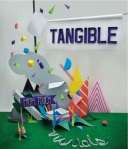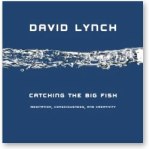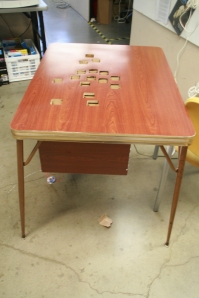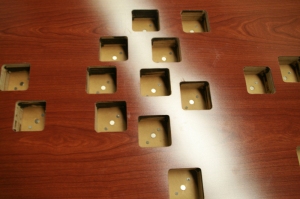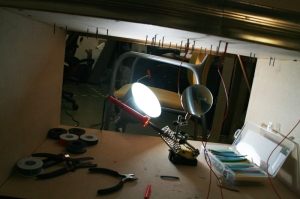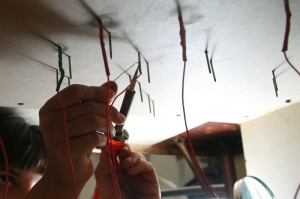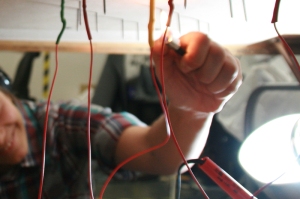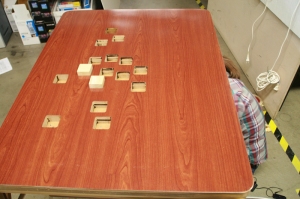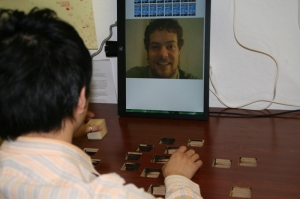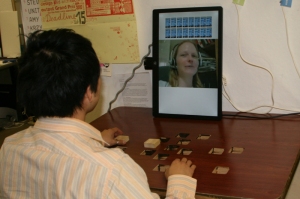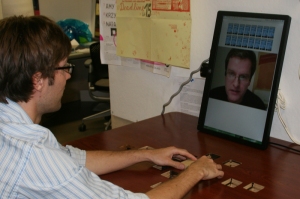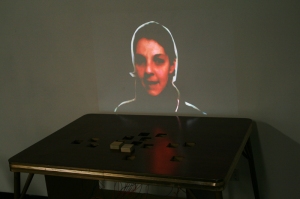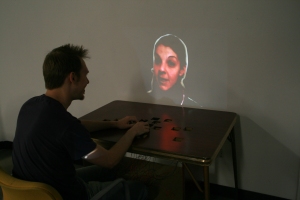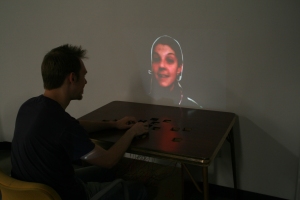“Die Ideenmaschine”
by Nadja Schnetzler
“Can ideas be produced industrially? In the same way as shoes or chocolate? Or does it require flashes of inspiration from brilliant creative thinkers?
No, claims Nadja Schnetzler. In her Swiss company BrainStore, ideas are produced in the same way as products: to order and on a conveyor belt. How is it made possible? – very simply: with the BrainStore ideas machine, an innovation model which functions on engineering principles. The author explains how ideas can be produced systematically and efficiently using this model. Numerous case studies from all over Europe and many anecdotes show the reader how he can successfully use the idea factory’s tools in his own company.
The book shows that anyone can develop good ideas – you just need to know the right methods and put together the right team.”

“Design by Use”
by Uta Brandes, Sonja Stich, Miriam Wender
“This publication explores and analyzes a very special kind of design â the phenomenon, as normal as it is wonderful, in which people with no formal training in design take things that have already been designed and reuse them, convert them to new uses, in short, “misuse” them in the very best sense of the word. Non-intentional design (NID) goes on every day, in every area of life, in every region of the world. Redesign through reuse makes things multifunctional and cleverly combines them to generate new functions. It is often reversible, resource-friendly, improvisational, innovative, and economical. It can become a source of inspiration for design, provided professional designers look up and take notice of what actually happens to all the things they design when they are used.”
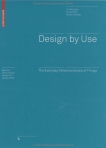
“By Hand, The Use of Craf in Contemporary Art”
by Shu Hung and Joseph Magliaro
“In a response to the sleek forms and perfect angles of most late twentieth century design objects, many of today’s artists and designers are returning to handmade work such as hand lettering, hand drawing, and hand sewing. By Hand features an international collection of the most noteworthy artists and shows their work in detailed photography and insightful texts. From books to pillows to T-shirts to toys, the pieces in this volume define an alternative view of contemporary design. Personal craft is emphasized over perfection and the personality of the artist is put forth as a key element of the finished product. From Kiki Smith’s lovingly etched birds to Barb Hunt’s knitted land mines to dynamo-ville’s one-of-a-kind puppets to Evil Twin’s hand-stitched publications, today’s art revels in the care and consideration of craft.”

“Shapes For Sounds”
by Timothy Donaldson
“Why Alphabets look like they do, what has happened to them since printing was invented, why they won’t ever change, and how it might have been.
This book examines a fundamental discovery of humankind, the idea of shapes for sound – of alphabets. Without them, newspaper would be just folded paper, mystery envelopes would drop through your letterbox, you might brush your teeth with hair gel and you wouldn’t be reading this. The development of this idea is …”
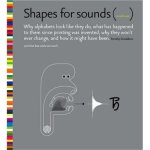
“In The Blink Of An Eye”
by Walter Murch
“In the Blink of an Eye is celebrated film editor Walter Murch’s vivid, multifaceted, thought — provoking essay on film editing. Starting with what might be the most basic editing question — Why do cuts work? — Murch treats the reader to a wonderful ride through the aesthetics and practical concerns of cutting film. Along the way, he offers his unique insights on such subjects as continuity and discontinuity in editing, dreaming, and reality; criteria for a good cut; the blink of the eye as an emotional cue; digital editing; and much more. In this second edition, Murch reconsiders and completely revises his popular first edition’s lengthy meditation on digital editing (which accounts for a third of the book’s pages) in light of the technological changes that have taken place in the six years since its publication.”

“What It Is”
by Lynda Barry
“From School Library Journal
Starred Review. Grade 9 Up–Every so often a book comes along that surpasses expectations, taking readers on an inspirational voyage that they don’t want to leave. This is one such book. Each page is a feast for the eyes with beautiful full-page collages of photographs, watercolors, ink drawings, and text, resulting in a gorgeous volume that explores and encourages writing in a combination of ways. The author challenges readers with philosophical questions to ponder, such as What is an image? Where are they found? Can we remember something we can’t imagine? The volume also acts as a workbook that successfully encourages teens to explore their own creativity through writing. In addition, autobiographical glimpses of Barry’s journey from childhood to adulthood appear throughout the book. The struggles and obstacles she faces while following her path of becoming an artist and writer allow readers to believe in the possibility of writing themselves. This stunning book will appeal to those teens who are interested in delving into their creativity through words and art. The questions posed and valuable exercises that exist within its pages, along with the illustrations, could also make this book a valuable tool for English and art teachers in the classroom.–Lara McAllister, Halifax Public Libraries, Nova Scotia
Copyright © Reed Business Information, a division of Reed Elsevier Inc. All rights reserved.” http://www.amazon.com/What-Lynda-Barry/dp/1897299354
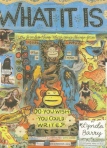
“Data Flow, Visualising Information In Graphic Design”
“More and more information is being visualised. Diagrams, data and information
graphics are utilised wherever increasingly complex elements are present,
whether it is in magazines, non-fiction books or business reports, packages or
exhibition designs.
Data Flow presents an abundant range of possibilities in visualising data and
information. Today, diagrams are being applied beyond their classical fields
of use. In addition to archetypical diagrams such as pie charts and histograms,
there are manifold types of diagrams developed for use in distinct cases and
categories. These range from chart-like diagrams such as bar, plot, line diagrams
and spider charts, graph-based diagrams including line, matrix, process flow,
and molecular diagrams to extremely complex three-dimensional diagrams.
The more concrete the variables, the more aesthetically elaborate the graphics
sometimes reaching the point of art the more abstract, the simpler the readability.
The abundant examples in Data Flow showcase the various methodologies
behind information design with solutions concerning complexity, simplification,
readability and the (over)production of information. In addition to the examples
shown, the book features explanatory text.
On 256 pages, Data Flow introduces a comprehensive selection of innovatively
designed diagrams. This up-to-date survey provides inspiration and concrete
solutions for designers, and at the same time unlocks a new field of visual codes.”
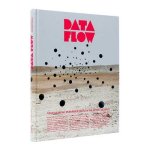
One of my most favorite book I probably consult at least once a week
“LOST CONTROL” ncc
“Neasden Control Centre was the first book to feature the artist project of the same name. It shows how NCC uses talent, technique and a childlike perspective to create works that mix drawing, graphic design and art. Because these multi-disciplinary works are exactly in tune with the zeitgeist, the book achieved cult status in the design scene and is one of the most sought after out-of-print titles.
Lost Control is the self-deprecating title of the new publication from the Neasden Headquarters. The book presents graphic design, installations and collages in NCC’s incomparable style that always comes across as simultaneously spontaneous and calculated. These seemingly contradictory, but in NCC’s work so coherently united characteristics give their work a powerful appeal. They are not only influencing creatives from around the world today, but are also increasingly recognized by clients such as Volkswagen and international museums such as the Baltic Centre for Contemporary Art.
The majority of work featured in Lost Control was created by Neasden Control Centre exclusively for this book and is complemented by images from current commercial and artistic projects.”
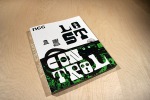
“Designing for Interaction: Creating Smart Applications and Clever Devices (Voices That Matter)”
By Dan Saffer
“Explore the new design discipline that is behind such products as the iPod and innovative Web sites like Flickr. While other books on this subject are either aimed at more seasoned practitioners or else are too focused on a particular medium like software, this guide will take a more holistic approach to the discipline, looking at interaction design for the Web, software, and devices. It is the only interaction design book that is coming from a designers point of view rather than that of an engineer.
This much-needed guide is more than just a how-to manual. It covers interaction design fundamentals, approaches to designing, design research, and more, and spans all mediums—Internet, software, and devices. Even robots! Filled with tips, real-world projects, and interviews, you’ll get a solid grounding in everything you need to successfully tackle interaction design.
Designing for Interaction is an AIGA Design Press book, published under Peachpit’s New Riders imprint in partnership with AIGA.”
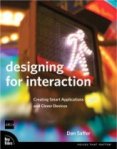
Three D – Graphic Spaces
““Three D â Graphic Scenarios” highlights a current trend in international graphic design. More and more visual designers are staging three-dimensional scenarios and turning them into posters, flyers, book and magazine covers, and animated films. The result is new and evocative pictorial worlds that range from playfully arranged still lifes to room-filling installations. Common to them all is the use of analogue design techniques that give real objects precedence over perfectly simulated computer representations.
Edited by Gerrit Terstiege, editor in chief of the design journal form, and designed by the prizewinning Frankfurt-based design studio Pixelgarten, “Three D â Graphic Scenarios” provides an inspiring look at the various drafting techniques and expressive tools associated with its subject. The publication is rounded out by an essay by Steven Heller, for many years the art director of the New York Times, and an interview with the noted graphic designer Stefan Sagmeister, one of the leading exponents of this trend.”

Designing Gestural Interfaces
by Dan Saffer
“Dave Cronin of Cooper writes a nice review of Designing Gestural Interfaces:Dan Saffer’s new book Designing Gestural Interfaces is a great step towards defining a clear language of physical interactions. The book provides a solid overview of the important things to consider when designing for touchscreens and motion-sensitive controllers, as well as good design practices like prototyping and documentation. For me, the real meat of the book is the discussion of patterns like “spin to scroll,” and “wave to activitate,” as well as the catalog of gestures that could be used as the basis of a physical control idiom (like “shake head no”).
Both of these sections should provide good food for thought as you contemplate how to get beyond simple point-and-click interactions.”
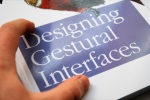
Tangible (Hardcover)
“Tangible presents graphic-inspired design, objects and orchestrated spaces by exceptional young
creatives that are producing striking visual and spatial work.
The borders between graphic design, illustration, art, interior design, architecture
and craftsmanship are becoming increasingly blurred. More than ever before,
graphic design is being used as the underlying medium together with multiple
practices to manifest creative visions. Following in the footsteps of Hidden Track
(2005) and Tactile (2007), Tangible presents further developments from the work
of young designers and artists who are experimenting with this multidisciplinary
approach and creating outstanding original tangible designs.
These designers from different disciplines are choosing to no longer work exclusively
in two dimensions, instead dealing intensively with space, materials and
physical products. Each chapter in the book features different trends and styles
demonstrating various approaches and solutions to this new area of graphic
design. Graphics morph into spatial sculptures, the intangible is made visual
through handmade craftsmanship, physical experiences, visual environments
and staged spatial installations such as art installations, interiors and architecture
as well as urban interventions.
The striking visual work in Tangible indicates the rise of graphic-inspired interior
designs as artists, graphic designers, typographers and illustrators transform
their ideas into shops, restaurants, hotels and fair stand designs.”
